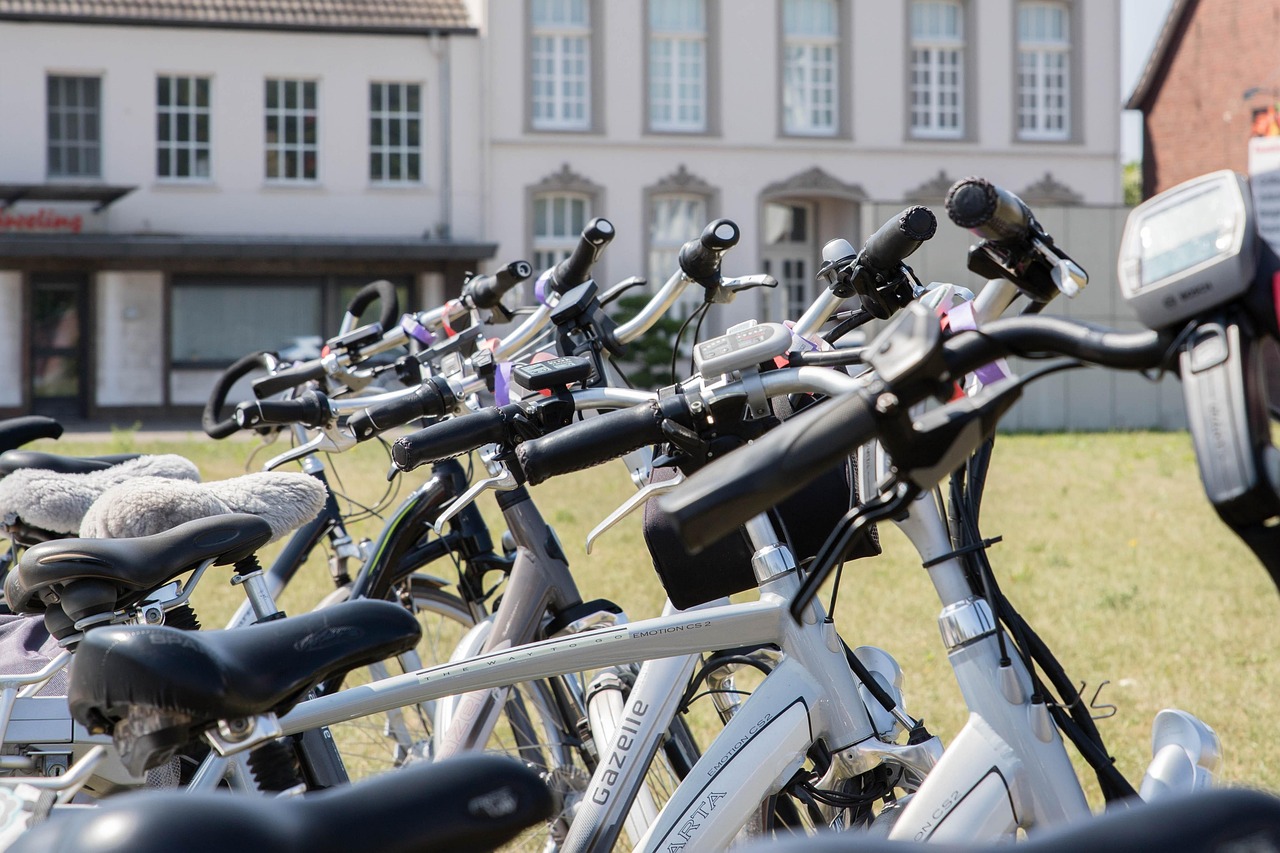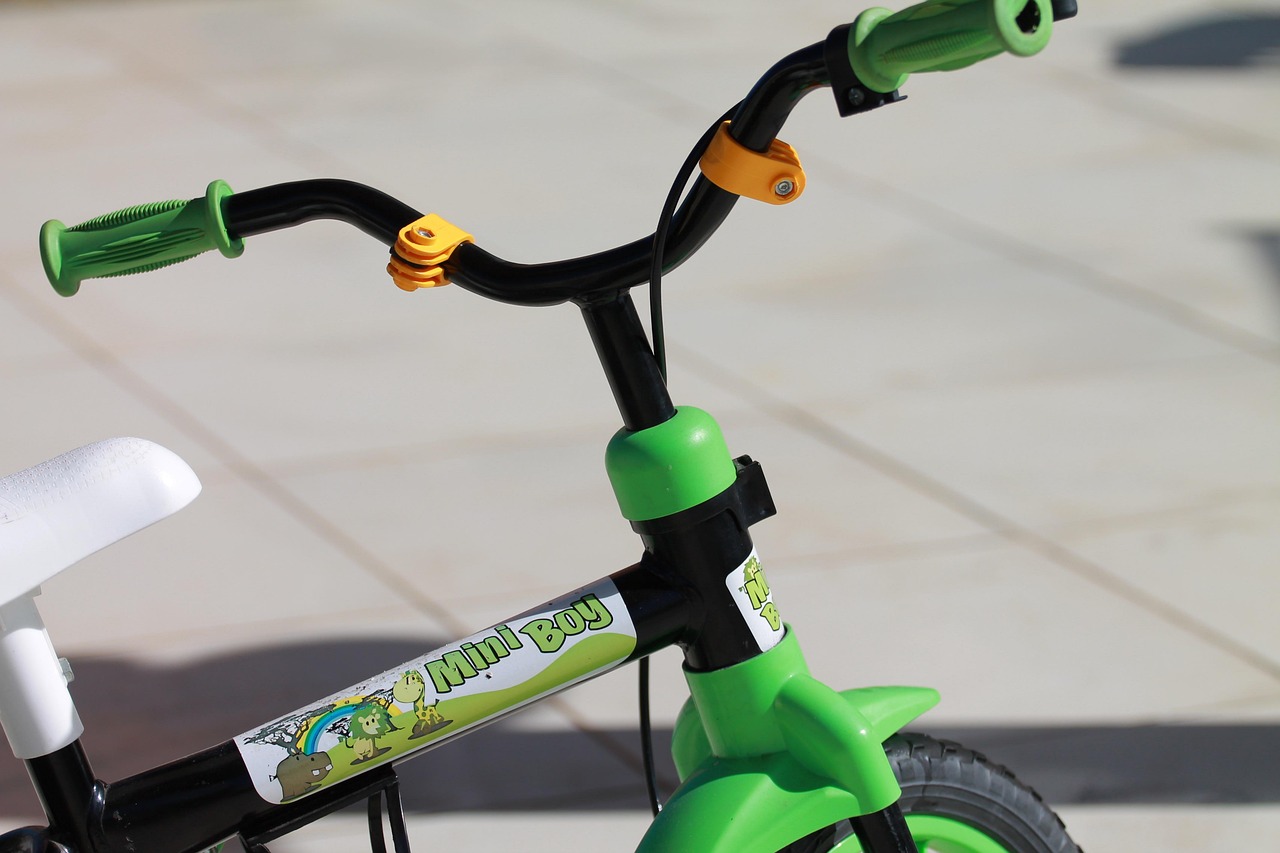As winter approaches, adventure enthusiasts seek ways to enjoy the snowy landscapes. Fat tire electric bikes emerge as a fantastic option for winter riding, offering unique features that enhance performance and safety on challenging terrains. These bikes are specifically designed to tackle snow and ice, making them ideal companions for winter excursions.
Understanding Fat Tire Electric Bikes
Fat tire electric bikes come equipped with wider tires that provide superior traction and stability. Their unique design allows for better weight distribution, which is crucial for maintaining balance on slippery surfaces. This section delves into the characteristics that make these bikes a top choice for winter riding.
The Advantages of Fat Tires in Winter
- Enhanced Stability and Control: The wider surface area of fat tires enables riders to navigate through snow with confidence, ensuring better handling in icy conditions.
- Improved Traction on Snow: These tires are engineered to grip snow effectively, reducing the risk of slipping and providing a safer ride.
- Comfortable Ride Experience: The added cushioning from fat tires absorbs shocks from uneven terrain, ensuring a smoother ride even on rough, snowy paths.
Electric Assistance for Winter Riding
Equipped with electric motors, fat tire bikes make uphill climbs and long rides more manageable, even in cold weather. This electric assistance is invaluable for winter adventures, allowing riders to conserve energy while enjoying the ride.
Choosing the Right Fat Tire Electric Bike
When selecting a fat tire electric bike, consider factors such as battery life, motor power, and tire width. Ensuring that you choose a bike with a reliable battery is crucial, especially since cold weather can impact performance.
Maintenance Tips for Winter Riding
- Protecting Electrical Components: Safeguarding electrical parts from moisture and cold is essential to maintain functionality during winter rides.
- Tire Care and Inspection: Regularly checking tire condition and pressure is vital for optimal performance in cold weather.
Conclusion: Embrace Winter Adventures
Fat tire electric bikes offer a unique blend of design and functionality that makes them perfect for winter exploration. With their ability to tackle snowy terrains and provide a comfortable ride, they are the ultimate companions for those looking to embrace the beauty of winter landscapes.

Understanding Fat Tire Electric Bikes
Fat tire electric bikes are revolutionizing the way we experience winter riding. With their wider tires, these bikes are specially designed to provide enhanced traction and stability on challenging terrains, particularly in snowy and icy conditions. Unlike traditional bikes, fat tire models feature tires that are typically 3.7 inches or wider, allowing for a larger surface area that effectively distributes weight. This unique design is crucial for winter enthusiasts looking to explore the great outdoors during colder months.
One of the most significant advantages of fat tire electric bikes is their ability to maintain grip on slippery surfaces. The wider tires create a larger contact patch with the ground, which helps to improve traction significantly. This is especially beneficial when navigating through fresh snow or icy paths, where slipping can be a major concern. Riders can enjoy a more stable and controlled experience, making it easier to maneuver through various winter environments.
Additionally, fat tire electric bikes often come equipped with powerful electric motors that assist in climbing hills and tackling challenging terrains. This electric assistance is invaluable during winter rides, where the added weight of snow can make pedaling more strenuous. With the right bike, riders can enjoy longer excursions without the fatigue that often accompanies traditional biking in cold conditions.
Furthermore, the comfort factor cannot be overlooked. The extra cushioning provided by fat tires absorbs shocks from uneven surfaces, allowing for a smoother ride over rough, snowy paths. This is particularly important for those who wish to explore off-road trails or less maintained paths during the winter months.
In conclusion, fat tire electric bikes are engineered to enhance the winter riding experience. Their unique features, including wider tires, electric assistance, and superior comfort, make them an ideal choice for adventurers looking to embrace the beauty of winter landscapes.

The Advantages of Fat Tires in Winter
When it comes to winter riding, fat tires stand out as a revolutionary feature that significantly enhances the experience. These wider tires offer an array of advantages that not only improve safety but also boost overall control on challenging terrains. In this section, we will explore how fat tires optimize winter biking.
- Increased Surface Area: The broader design of fat tires allows for a larger contact patch with the ground. This increased surface area helps to distribute weight more evenly, which is crucial when navigating through snow or ice. The result is enhanced stability, reducing the likelihood of slipping.
- Improved Grip: Fat tires are engineered to grip slippery surfaces effectively. Their unique tread patterns are designed to channel snow and water away, providing maximum traction. This feature is particularly beneficial when riding on icy paths, where traditional tires might fail.
- Enhanced Stability: The stability offered by fat tires allows riders to maneuver through winter conditions with confidence. This is vital for maintaining control, especially on uneven or unpredictable surfaces.
- Shock Absorption: The additional volume of air in fat tires provides natural cushioning, which absorbs shocks from rough, snowy terrain. This results in a smoother ride, making long journeys more comfortable even in harsh conditions.
- Versatility: Fat tires are not just limited to snow; they perform well on a variety of surfaces, including sand and mud. This versatility makes them a great choice for adventurers looking to explore different terrains during winter.
In summary, the advantages of fat tires in winter riding are clear. With their ability to enhance grip, stability, and comfort, they are an essential feature for anyone looking to enjoy winter biking adventures safely and effectively.
Enhanced Stability and Control
When it comes to navigating through the unpredictable and often challenging winter landscapes, fat tire electric bikes stand out due to their unique design and functionality. The broader tires provide a significant advantage, offering enhanced stability that is crucial for maintaining control on icy and snowy terrains.
One of the key features of fat tires is their increased surface area. This design allows for better weight distribution, which in turn improves grip on slippery surfaces. Riders can confidently tackle steep inclines or sudden turns without the fear of losing traction. The wider footprint of these tires helps to prevent sinking into soft snow, allowing for a smoother ride over challenging conditions.
Additionally, the tread patterns of fat tires are specifically engineered to maximize grip. Many fat tires come with aggressive treads that dig into the snow and ice, providing the necessary traction to avoid slips and falls. This is particularly important when riding on uneven surfaces where balance is essential.
Moreover, the flexibility of fat tires contributes to a more controlled ride. The ability to absorb shocks from bumps and irregularities in the terrain enhances comfort and stability. Riders can navigate through rough patches without losing their footing or control, making for a more enjoyable winter biking experience.
In summary, the stability and control offered by fat tire electric bikes are unparalleled in winter conditions. With their wider tires, improved traction, and shock absorption capabilities, these bikes empower riders to explore winter landscapes with confidence and ease.
Improved Traction on Snow
When it comes to winter riding, fat tires stand out as a remarkable innovation designed to enhance traction and stability on snow-covered terrain. These specialized tires are not just wider; they are engineered with specific features that significantly improve grip and reduce the risk of slipping during winter adventures.
- Wider Surface Area: The increased width of fat tires provides a larger surface area that helps to distribute the rider’s weight more evenly. This distribution is crucial when riding on soft snow, as it prevents the tires from sinking and allows for better maneuverability.
- Unique Tread Patterns: Fat tires often come with unique tread designs that enhance traction on slippery surfaces. These patterns are specifically crafted to grip snow and ice, providing riders with the confidence to navigate through challenging winter conditions.
- Lower Tire Pressure: Riders can run fat tires at lower pressures compared to standard tires. This flexibility allows the tires to conform better to the uneven surfaces of snow, enhancing grip and providing a more stable ride.
- Material Composition: Many fat tires are made from advanced rubber compounds that remain flexible in cold temperatures. This flexibility is essential for maintaining traction as it allows the tires to adapt to the changing surface conditions.
In addition to these features, fat tires also offer improved shock absorption, which contributes to a more comfortable ride over bumpy, snowy paths. The combination of better traction and comfort makes fat tires an ideal choice for winter biking enthusiasts.
Ultimately, the engineering behind fat tires is a game-changer for winter riding, allowing cyclists to explore snowy landscapes with confidence and control.
Comfortable Ride Experience
When it comes to winter riding, comfort is paramount, especially when navigating through challenging conditions such as snow and ice. The unique design of fat tire electric bikes significantly contributes to a more enjoyable ride, allowing enthusiasts to embrace the beauty of winter landscapes without sacrificing comfort.
The extra cushioning provided by fat tires plays a crucial role in absorbing shocks and vibrations that can occur when riding over uneven, snowy paths. This feature is particularly beneficial in winter, as it helps to smooth out the ride, making it easier to focus on the scenery rather than the bumps along the way. Riders can enjoy a more stable experience, which is essential for maintaining control in slippery conditions.
Moreover, the wider surface area of fat tires not only enhances traction but also distributes the rider’s weight more evenly across the snow. This improved weight distribution reduces the likelihood of sinking into soft snow, allowing for a more effortless glide over the surface. As a result, riders can maintain their momentum and enjoy a seamless journey, even on challenging terrains.
In addition to the physical benefits, the ergonomic design of fat tire bikes contributes to a more comfortable riding posture. With features such as adjustable seats and handlebars, riders can tailor their setup to suit their preferences, further enhancing their overall riding experience. The combination of these elements ensures that even during long rides in cold weather, riders remain comfortable and can enjoy their adventure to the fullest.
In conclusion, fat tire electric bikes are not just about tackling snowy terrains; they also prioritize rider comfort. With their shock-absorbing capabilities and thoughtful design, these bikes are the perfect companions for winter adventures, allowing riders to explore with ease and confidence.
Electric Assistance for Winter Riding
When it comes to winter biking, electric assistance plays a crucial role in enhancing the overall experience. Fat tire electric bikes are equipped with powerful motors that significantly ease the challenges posed by cold weather and snowy terrains. This section delves into how electric assistance transforms winter rides into enjoyable adventures.
- Uphill Climbing Made Easy: One of the most significant advantages of electric motors is their ability to provide extra power during uphill climbs. Riders can tackle steep inclines without exhausting themselves, allowing for longer rides and greater exploration.
- Extended Range: With electric assistance, riders can cover more distance without feeling fatigued. This is particularly beneficial in winter when the cold can make longer rides more challenging. The additional support from the motor encourages riders to venture further into the beautiful winter landscapes.
- Consistent Performance: Electric motors offer consistent power delivery, which is essential when riding on slippery surfaces. This reliability enhances stability and control, making it easier to navigate through snow and ice.
- Comfort in Cold Weather: The ability to maintain a steady pace with electric assistance helps riders stay warm and comfortable. By reducing the physical effort required, riders can enjoy their time outdoors without the discomfort of freezing temperatures.
Additionally, electric assistance allows riders to adjust their level of support according to their needs. Whether tackling steep hills or cruising along flat snowy paths, the motor can be set to provide just the right amount of help.
In conclusion, electric assistance on fat tire bikes not only enhances the riding experience but also opens up new possibilities for winter adventures. With the right bike, riders can embrace the beauty of winter while enjoying the thrill of biking.

Choosing the Right Fat Tire Electric Bike
is a crucial step for anyone looking to enjoy winter riding adventures. With a plethora of options available, it’s essential to understand the key factors that influence your decision. This guide will help you navigate through the various elements to consider, ensuring you make an informed choice.
- Battery Life: One of the most important features of a fat tire electric bike is its battery life. Cold weather can significantly affect battery performance, leading to reduced range. Look for bikes with high-capacity batteries, ideally above 500Wh, to ensure you can ride longer distances without worrying about recharging.
- Motor Power: The motor’s power is vital for handling steep inclines and snowy trails. A motor with at least 750 watts is recommended for optimal performance in winter conditions. This power ensures that you can tackle challenging terrains with ease.
- Tire Width: Fat tire bikes typically have tires that are 4 inches or wider. Wider tires provide better traction and stability on slippery surfaces, which is critical for safe winter riding. Ensure the bike you choose has suitable tire width for enhanced performance in snow and ice.
Additionally, consider the bike’s overall weight and frame design. A lighter frame can make handling easier, while a sturdy design will enhance durability. Pay attention to the bike’s suspension system, as a good suspension will absorb shocks from rough, icy paths, providing a more comfortable ride.
In conclusion, selecting the right fat tire electric bike involves careful consideration of battery life, motor power, and tire width. By focusing on these factors, you can ensure that your bike will meet the demands of winter riding, allowing you to enjoy the beautiful snowy landscapes with confidence.
Battery Life Considerations
When it comes to riding fat tire electric bikes in winter, one of the most critical aspects to consider is battery performance. Cold temperatures can significantly impact battery efficiency, leading to reduced range and power output. Therefore, selecting a bike equipped with a reliable battery is essential for ensuring enjoyable and extended winter rides.
In colder climates, battery chemistry can be adversely affected. Lithium-ion batteries, commonly used in electric bikes, are known to lose their capacity at lower temperatures. This means that a bike that performs well in moderate conditions may struggle in frigid weather. Riders should look for batteries specifically designed to handle cold conditions, as they tend to have improved thermal management systems.
- Battery Capacity: A higher amp-hour (Ah) rating typically indicates a larger capacity, allowing for longer rides without the need for frequent recharging.
- Cold Weather Ratings: Some manufacturers provide specifications regarding how their batteries perform in low temperatures, which can be invaluable when making a selection.
- Heating Features: Certain advanced models come with built-in battery heaters that can maintain optimal temperatures, ensuring consistent performance even in harsh conditions.
Moreover, it’s crucial to consider how you store and charge your battery during winter. Keeping the battery warm and charged can prevent it from freezing and losing its ability to hold a charge. Always store the battery indoors and avoid leaving it exposed to extreme cold.
In conclusion, understanding the implications of cold weather on battery performance is vital for winter biking enthusiasts. By choosing a bike with a robust and reliable battery, riders can ensure they remain powered through their winter adventures, enhancing both safety and enjoyment.
Motor Power and Performance
The motor power of fat tire electric bikes is a critical factor for winter riding, especially when navigating challenging terrains such as steep hills and snowy paths. A robust motor not only enhances the overall riding experience but also ensures that riders can tackle various winter conditions with ease.
When considering the ideal motor specifications for winter riding, it is essential to focus on several key aspects:
- Motor Wattage: A motor with a power output ranging from 750W to 1500W is generally recommended for winter riding. This wattage range provides sufficient torque to climb steep inclines and maintain speed on slippery surfaces.
- Torque: The torque rating of the motor is equally important. A higher torque rating (measured in Nm) translates to better performance on steep hills. Motors offering at least 50 Nm of torque are ideal for winter conditions.
- Battery Compatibility: A powerful motor requires a reliable battery to perform optimally. Look for bikes equipped with high-capacity lithium-ion batteries that can sustain longer rides in cold weather without significant performance drops.
Moreover, the efficiency of the motor plays a vital role in maximizing battery life during winter rides. Electric bikes equipped with brushless motors tend to be more efficient, providing greater range and reliability in cold temperatures.
In addition to these specifications, it is crucial to consider the bike’s overall weight distribution and frame design, which can impact handling and stability on icy surfaces. A well-balanced fat tire electric bike, combined with a powerful motor, can significantly enhance the rider’s confidence and control in winter conditions.
In conclusion, selecting the right motor power and performance features is essential for enjoying winter adventures on fat tire electric bikes. By prioritizing high wattage, torque, and battery compatibility, riders can ensure a safe and exhilarating experience in snowy terrains.

Maintenance Tips for Winter Riding
Proper maintenance is crucial for ensuring that your fat tire electric bike performs optimally during the winter months. The cold weather can pose unique challenges, but with the right care, you can keep your bike in excellent shape for all your winter adventures. Below are some practical tips to help you maintain your bike effectively during the cold season.
- Regular Cleaning: After each ride, especially in snowy or slushy conditions, make sure to clean your bike thoroughly. Use a soft brush and mild soap to remove salt and grime that can corrode components.
- Inspect the Tires: Fat tires need regular inspection for any signs of wear and tear. Check for proper inflation and look for any punctures or damage. Maintaining the correct tire pressure is essential for optimal traction on slippery surfaces.
- Protect Electrical Components: Cold temperatures can affect the performance of your bike’s battery and electrical systems. Store your bike in a warm place when not in use, and consider using waterproof covers to protect sensitive components from moisture.
- Lubricate Moving Parts: Ensure that all moving parts, such as the chain and gears, are well-lubricated. Cold weather can cause lubricants to thicken, so using a winter-specific lubricant can help maintain smooth operation.
- Battery Care: Cold weather can reduce battery performance. Keep the battery charged and consider removing it when storing the bike for extended periods. Store it in a warm place to prolong its life.
By following these maintenance tips, you can ensure that your fat tire electric bike remains reliable and ready for winter riding. A little extra care goes a long way in enhancing your biking experience during the colder months.
Protecting Electrical Components
is a crucial aspect of maintaining fat tire electric bikes during the winter months. The cold temperatures and moisture can significantly impact the performance and longevity of electrical components. Here, we explore effective strategies to safeguard these vital parts from winter damage.
- Use Protective Covers: Consider investing in waterproof covers for your bike’s electrical components. These covers can shield sensitive parts from snow and rain, minimizing the risk of moisture damage.
- Regular Inspection: Frequent checks on electrical connections are essential. Look for any signs of corrosion or wear, especially after rides in harsh conditions. Addressing issues early can prevent more significant problems down the line.
- Seal Connections: Ensure that all electrical connections are well-sealed. Using dielectric grease can help protect connectors from moisture and corrosion, extending their lifespan.
- Battery Care: Cold weather can reduce battery efficiency. Store your bike indoors when not in use, and consider using a battery warmer to maintain optimal performance during rides.
- Drying Procedures: After riding in wet conditions, dry your bike thoroughly. Use a soft cloth to wipe down electrical components, and if possible, allow the bike to air dry in a warm area.
By implementing these protective measures, riders can enjoy their winter adventures without the worry of damaging their bike’s electrical systems. Proper care not only enhances performance but also ensures a safer riding experience throughout the season.
In conclusion, safeguarding electrical components is essential for maintaining the functionality and safety of fat tire electric bikes during winter. With the right precautions, riders can confidently tackle winter trails, knowing their bikes are well-protected against the elements.
Tire Care and Inspection
is crucial for ensuring the safety and performance of your fat tire electric bike, especially during the winter months. As temperatures drop, the conditions on the road can become more challenging, making regular tire checks even more important. Here, we will discuss best practices for inspecting tire condition and pressure in cold weather.
- Regular Visual Inspections: Start by visually inspecting your tires for any signs of damage, such as cuts, punctures, or uneven wear. Pay attention to the tread depth; if it appears worn down, it may be time for a replacement.
- Check Tire Pressure: Cold weather can cause tire pressure to drop, so it’s essential to check the pressure regularly. Use a reliable tire pressure gauge to ensure your tires are inflated to the manufacturer’s recommended PSI. Low pressure can lead to poor handling and increased wear.
- Assess Tread Condition: The tread on your tires is vital for traction on snowy and icy surfaces. Make sure the tread is at least 1/8 inch deep. If you notice that the tread is smooth or worn down, consider replacing your tires with new ones designed for winter conditions.
- Monitor for Cracks and Bulges: Inspect the sidewalls of your tires for any cracks or bulges. These can indicate internal damage and could lead to tire failure. If you find any abnormalities, it’s best to consult a professional.
- Rotate Tires Regularly: To ensure even wear, rotate your tires according to the manufacturer’s recommendations. This practice helps maintain optimal performance and extends the lifespan of your tires.
In conclusion, maintaining your fat tire electric bike’s tires through regular inspections and proper care is essential for safe and enjoyable winter riding. By following these best practices, you can ensure that your bike performs optimally, allowing you to embrace the winter landscape with confidence.

Conclusion: Embrace Winter Adventures
Fat tire electric bikes are revolutionizing the way we explore winter landscapes. Their innovative design and functionality make them an excellent choice for both seasoned riders and newcomers to winter biking. With the ability to traverse snowy terrains, these bikes open up a world of possibilities for outdoor enthusiasts seeking adventure in the colder months.
Why Choose Fat Tire Electric Bikes?
- Superior Traction: The wide tires provide enhanced grip on slippery surfaces, allowing riders to confidently navigate through snow and ice.
- Stability and Control: Fat tires ensure better stability, making it easier to handle challenging winter conditions.
- Electric Assistance: The electric motor aids in climbing steep hills and covering long distances, which can be particularly taxing in cold weather.
Enhanced Comfort and Performance
Riding a fat tire electric bike in winter conditions offers a comfortable experience. The added cushioning from the tires absorbs shocks from rough terrain, ensuring a smoother ride. Moreover, the electric assistance allows riders to maintain a steady pace without exhausting themselves, making long rides enjoyable.
Maintenance for Winter Riding
To keep your fat tire electric bike in optimal condition during winter, consider the following maintenance tips:
- Protect Electrical Components: Ensure that all electrical parts are shielded from moisture and cold to prevent damage.
- Regular Tire Inspections: Check tire pressure and condition frequently to ensure maximum performance and safety.
In conclusion, fat tire electric bikes are not just a mode of transport; they are a gateway to experiencing the beauty of winter in new and exciting ways. By embracing these bikes, adventurers can enjoy the serene landscapes, fresh air, and exhilarating rides that winter has to offer.
Frequently Asked Questions
- What are fat tire electric bikes?
Fat tire electric bikes are specially designed bicycles equipped with wider tires and an electric motor. These features help provide better traction, stability, and control, making them ideal for riding in snowy or icy conditions.
- How do fat tires improve winter riding?
Fat tires increase the surface area that contacts the ground, which helps distribute weight evenly. This results in improved grip on slippery surfaces, allowing for safer and more confident rides during winter adventures.
- What should I consider when choosing a fat tire electric bike?
When selecting a fat tire electric bike, consider factors like battery life, motor power, and the width of the tires. These elements are crucial for ensuring optimal performance and enjoyment during your winter rides.
- How can I maintain my fat tire electric bike in winter?
Regular maintenance is key! Protect electrical components from moisture, check tire pressure frequently, and inspect tires for wear and tear. Keeping your bike in top shape ensures a smooth and safe ride throughout the winter.
- Can I ride fat tire electric bikes in extreme cold?
Yes, you can! However, be mindful that extreme cold can affect battery performance. Choosing a bike with a reliable battery and taking care of it properly will make your winter riding experience much more enjoyable.












